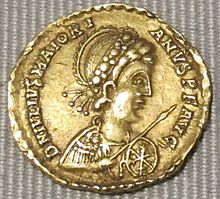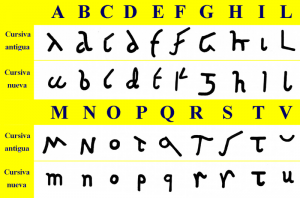 Writing guest posts, emails and tweets about INCEPTIO, PERFIDITAS and soon, SUCCESSIO, I’ve been asked why I write the titles in capitals. Some bloggers and respondees have written the book names with title case, e.g. Inceptio, Perfiditas and I’ve gently pointed out that it’s not quite correct.
Writing guest posts, emails and tweets about INCEPTIO, PERFIDITAS and soon, SUCCESSIO, I’ve been asked why I write the titles in capitals. Some bloggers and respondees have written the book names with title case, e.g. Inceptio, Perfiditas and I’ve gently pointed out that it’s not quite correct.
So here’s the reason…I’m not SHOUTING, but following classical Roman usage. You may have noticed inscriptions on Roman tombs, arches and buildings are always in capitals. So are inscriptions on coins.
 The Romans used just 23 letters to write Latin. There were no lower case letters at first, and K, Y and Z used only for writing words of Greek origin. The letters J, U and W were added to the alphabet at a later stage to write languages other than Latin. J is a variant of I, U is a variant of V, and W was introduced as a ‘double-v’ to make a distinction between the sounds we know as ‘v’ and ‘w’ which was unnecessary in Latin.
The Romans used just 23 letters to write Latin. There were no lower case letters at first, and K, Y and Z used only for writing words of Greek origin. The letters J, U and W were added to the alphabet at a later stage to write languages other than Latin. J is a variant of I, U is a variant of V, and W was introduced as a ‘double-v’ to make a distinction between the sounds we know as ‘v’ and ‘w’ which was unnecessary in Latin.
Lowercase letters developed from cursive versions of the uppercase letters:
Old Roman cursive was the everyday form of handwriting used for writing letters (including love letters and dinner invitations), by merchants writing business accounts, by schoolchildren learning the Latin alphabet, and even emperors issuing commands.
A more formal style of writing was based on Roman square capitals, but cursive was used for quicker, informal writing. It was most commonly used from about the 1st century BC to the 3rd century, but it probably existed earlier than that.
New Roman cursive script was in use from the 3rd century to the 7th century, and uses letter forms that are more recognisable to modern eyes; a,b,d and e had taken a more familiar shape, and the other letters were proportionate to each other.
As Roma Novans are very proud of their Roman roots, they still follow classical practice of CAPITALS, so it seemed rude not to follow it for my book titles.
Alison Morton is the author of Roma Nova thrillers, INCEPTIO, and PERFIDITAS. Third in series, SUCCESSIO, is out early summer 2014.














Excellent description, Alison. We had this taught to us during the war; our Headmaster was a Latin scholar. He also drew parallels with the runic alphabet, them moving on to Greek. And we were only 11/12! He had some sympathy for Mussolini who was trying to restore an Italy long gone with a too debased population, and told us only to ever trust the Northern men; having sailed in and out of Naples I know exactly what he meant.
We’re so used to the public records which always show the official face of Rome. Hanwritten notes came to the public’s notice after the Vindolanda tablets were found and fascinating they are, too!
http://vindolanda.csad.ox.ac.uk/exhibition/paleo-1.shtml